Growing berries and harvesting them from your backyard is one of the most satisfying experiences ever. Plus, after growing and eating your own berries? Suddenly going to the store anymore just to buy that berry you need to make a pie, jams, and other desserts isn’t as appealing. Plus, planting berries in your backyard makes you confident that you only have the freshest berries ever. But why prune your berry plants?
Pruning berry plants makes the plant more manageable while also improving its health of the plant. Pruning berry plants also improve the quality and size of the berries harvested, while sometimes also increasing the number of berries in a harvest.
Want to know more about pruning berries? Let’s make sure you know how to prune any and every type of berry you’ve got growing in your backyard homestead – along with any insider tips that’ll help your harvest even more.
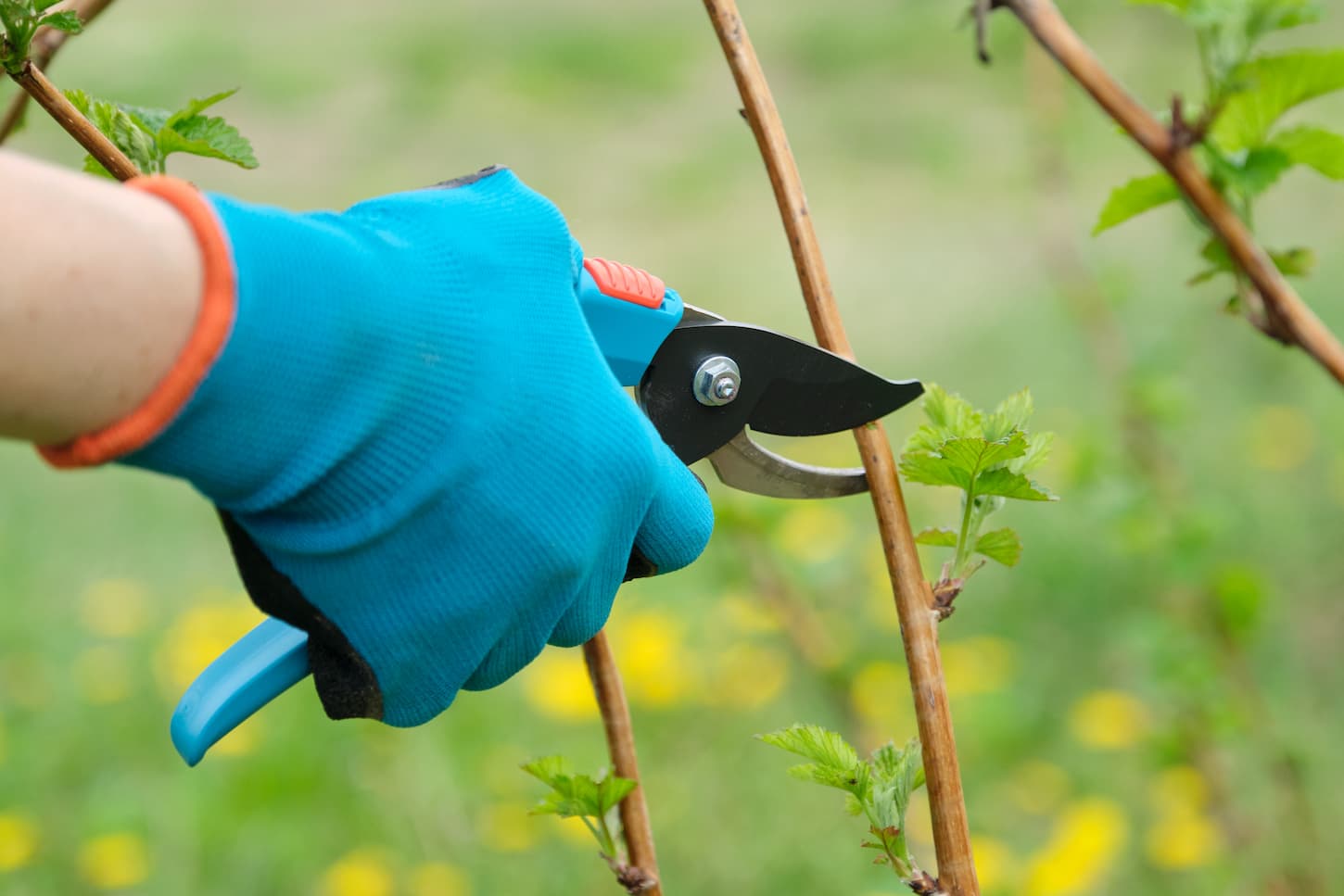
How to Prune Berry Bushes
Pruning berry bushes involves cutting back branches (or parts of the plant) so that the plant will focus on either growth or fruit production.
- Pruning berry bushes to maximize a harvest will mean removing dead (or spent) canes and branches, or removing excessive new growth (like runners).
- Pruning berry bushes for growth will minimize the fruit harvest. Pinch off flowers to encourage the berry plant to grow stronger roots and expand its foliage.
So, if you want to enjoy the delicious fruit gardening brings, then taking care of them is very necessary – and one of the ways how to take care of it is through pruning.
Before we start, here are some of the basic pieces of equipment that you will need to prune your berry plants.
- Heavy gloves
- Long-sleeved shirts and pants (or gardening sleeves)
- Pruners or loppers
- Eye protection (optional)
- Step ladder (optional)
- Support fencing for a new trellis (or materials to repair the old trellis)
Some of those items are totally optional.
For example, I prefer to wear short-sleeved shirts when working in the garden. However, I also put on my gardening sleeves (available here on Amazon). They’ve honestly been one of the best purchases I’ve ever made.
So, what is the proper way of pruning berry plants then?
The short answer to that is it depends on the growth cycle and the variety of your berry, that’s all. Remember also that not all berries are the same when it comes to pruning, it might work for some, but it will not work on your plant; that’s why understanding the growth cycle of your plant is very important.
The article will start by focusing on varieties that can be grown in North America, but I hope to extend them to all berry types one day. That means I’ll know and grow many of these varieties, but some of the more tropical varieties I won’t be as familiar with – at least until I can get a proper greenhouse going.
In the meantime, feel free to use this list of berries to jump to the section you’re looking for, though I suggest you don’t skip the next few sections, as they’ll walk you through some hugely important steps on pruning, tips, and more. Or if you do want to skip ahead, that’s fine. Just be sure to circle back.
- Blackberry
- Blueberry
- Boysenberry
- Cranberry
- Currant
- Elderberry
- Farkleberry (sparkleberry/winterberry)
- Goji berry
- Gooseberry
- Grapes
- Huckleberry
- Kiwi
- Loganberry
- Mulberry
- Raspberry
- Salmonberry
- Strawberry
- Tayberry
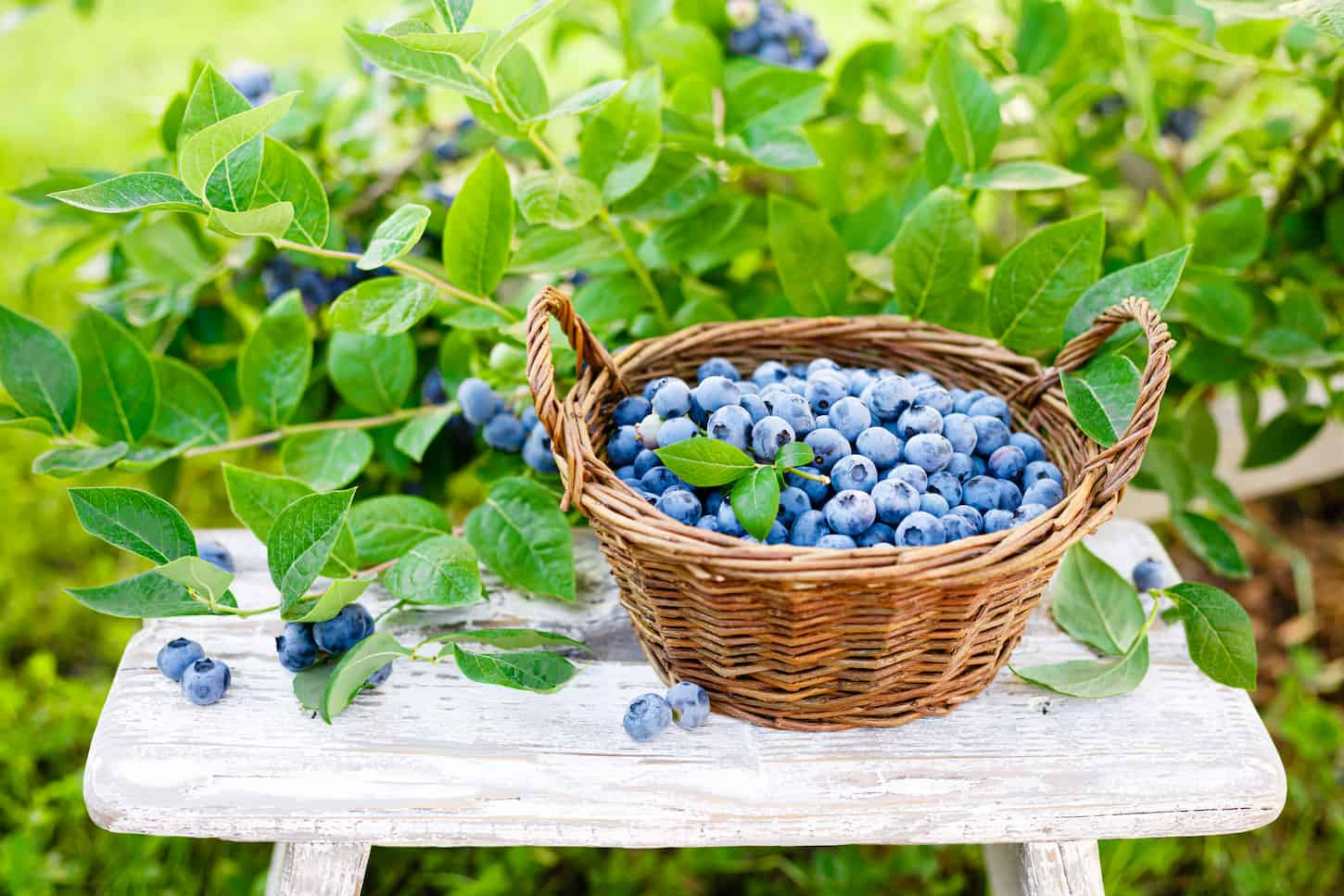
Berry Bushes that Need to be Pruned
All types of berries need pruning from time to time; from strawberries, and blueberries, to blackberries, and beyond. Pruning berry bushes keep plants tidy, results in better fruit taste and quality, and decreases the risk of disease and pests.
Why? Because it has a big effect on the overall health of your plant and the fruits it brings. Plus, as we’ve said above it is more manageable to handle, and it makes it easier for you to collect fruits during harvest time. Isn’t that nice?
In any case, we’re going to cover ALL of the berry types here in this article. That way, you’ll have a one-stop reference for all of your berry pruning needs.
How to Prune Everbearing Berry Canes
Everbearing berry canes don’t need much pruning, as canes are already genetically focused on fruit-bearing. They may benefit from being topped (or tipped) every year. Spent canes will still need to be removed. Many people like to chop down the whole patch yearly (with a mower) to keep things under control.
Before we start with pruning everbearing canes what is the difference first between everbearing berries and regular ones? If you compare everbearing berries with the regular or the traditional ones, then they do differ in so many ways; like fruit size, quality, and fruit yield. When it comes to fruit yield, everbearing berries produce a small number of fruits, but they do it very often, the fruits are also smaller in size compared to the regular ones.
Everbearing canes don’t need much pruning. If you compare the canes of the everbearing ones with the regular ones it doesn’t have that much difference because they are the same in size, shape, and stems – especially when they are young.
The only difference between the two is that when regular ones already produced fruits they will now focus on spreading and producing new canes until it is time for them to produce fruits again in their season. On the other hand, everbearing berries don’t produce many canes because they are more focused on growing fruit, that’s why it doesn’t need much pruning.
If you decide to prune them, just follow the guides below, but, remember, every berry differs in variety, so please be careful before pruning them, ok?
How to Prune Spent Berry Canes (Floricanes)
Heritage or not-everbearing berry plants will produce fruit on 2nd-year floricanes. Before flowering, floricanes will benefit from being tipped (or topped). After the harvest, spent floricanes will need to be pruned completely to make room for more primocanes and next year’s floricanes.
Not all berries are the same, in some cases, berry canes only produce fruit once in 2-year-old canes; these canes are called spent floricanes. Yes, spent floricanes don’t produce fruits anymore after it has been harvested so, the only way you can do to save your berry plant is to prune them back so, that new ones will have space to grow.
In pruning spent floricanes, you will have to use loppers or just regular pruning gear. After the fruits have been harvested, you will have to wait first until the end of the summer or early fall before pruning them. Remember, berries have different dormant periods so, you will have to carefully observe your berries first before pruning.
In pruning the floricanes, you will have to identify first the spent floricanes from the healthy ones; separate the canes and cut them right to the ground or as far as you can reach and that’s it! Wait for new ones to grow and you’re all good.
How Often Do You Need to Prune Berry Bushes?
Berry bushes typically only need to be pruned once every year, though some overgrown bushes may require extra pruning. Pruning too frequently is never recommended.
- Bushes being pruned for harvest (fruit growth) should be pruned after a harvest or during the off-season.
- Berry plants being pruned to focus on plant growth should focus on flower removal and minimal pruning of branches.
Pruning berry canes do have a lot of good effects, especially when it comes to the fruits you will harvest. But doing it too often can damage the whole plant. It may even lead to weak branches or canes in the long run.
Below are the best seasons wherein you can prune your plant berries. There are still some exceptions on some berries so, there are still times when you can prune them from time to time.
What Happens if you Don’t Prune Berry Plants?
Berry plants require good airflow, sunlight, and water. Failure to prune the plant will result in decreased fruit quantity lowered fruit quality, and result in an increased risk of plant disease and pests living in the plants. Failure to prune will also result in an ever-increasing bramble, though only the outer layer will produce fruit.
Well, aside from it getting tangled and all messed up, it also has a big effect on the overall health of your plant. The dead and the diseased canes will mix up and it will affect the new and healthy ones; potentially shortening the life of your berry plant. Fruit production is also at stake because some berries grow poorly if berry canes are not managed and pruned properly.
How to Tip (Top) Prune Canes for Better Berries
Tip pruning is when you cut off the tips or the very ends of the berry canes before the growing season. This will help the plant focus on growing fewer, better-quality, and better-sized berries. Topping canes can also keep plants more manageable and manage winter cane damage without having to have a trellis system.
Tip pruning is very simple just follow the guide below and you’re good to go!
- To tip prune berries, you will need sharp and clean pruning shears, you can also use your finger and thumb for smaller berry bushes.
- For larger berry plants, you can prune them about 24 inches (60 cm). If your plant is on the short side or more like a shrub you can simply prune the top part of it from 2.5 – 3 cm.
- You can also remove the diseased or dead canes when you tip prune your berry plants. Don’t worry, if you are careful it will not do much damage to your berry plant.
Personally, I like to top our berry plants back to only being about 3-4 feet tall. That usually means I’m cutting anywhere from a few inches to 2-3 feet off the tops of our canes, depending on how crazy they grew.
Topping the canes also means that you don’t have to rely on a trellis system to support your canes (and your fruit). It makes harvesting season a ton easier – because you can access all of the fruit and berries easily, without getting hit in the face by a berry cane.
We still have our trellis system, because it helps me see the outline of where the berry patch needs to stay. That way, I can remove the extra plants and keep our garden looking nice. But if I didn’t want it anymore? I could totally remove it.
Topping the canes also means that you’ll be able to manage any winter or wind damage to your canes better. And if you need more information on prepping berry bushes for winter? Read my guide on how to prepare raspberry bushes for winter here.
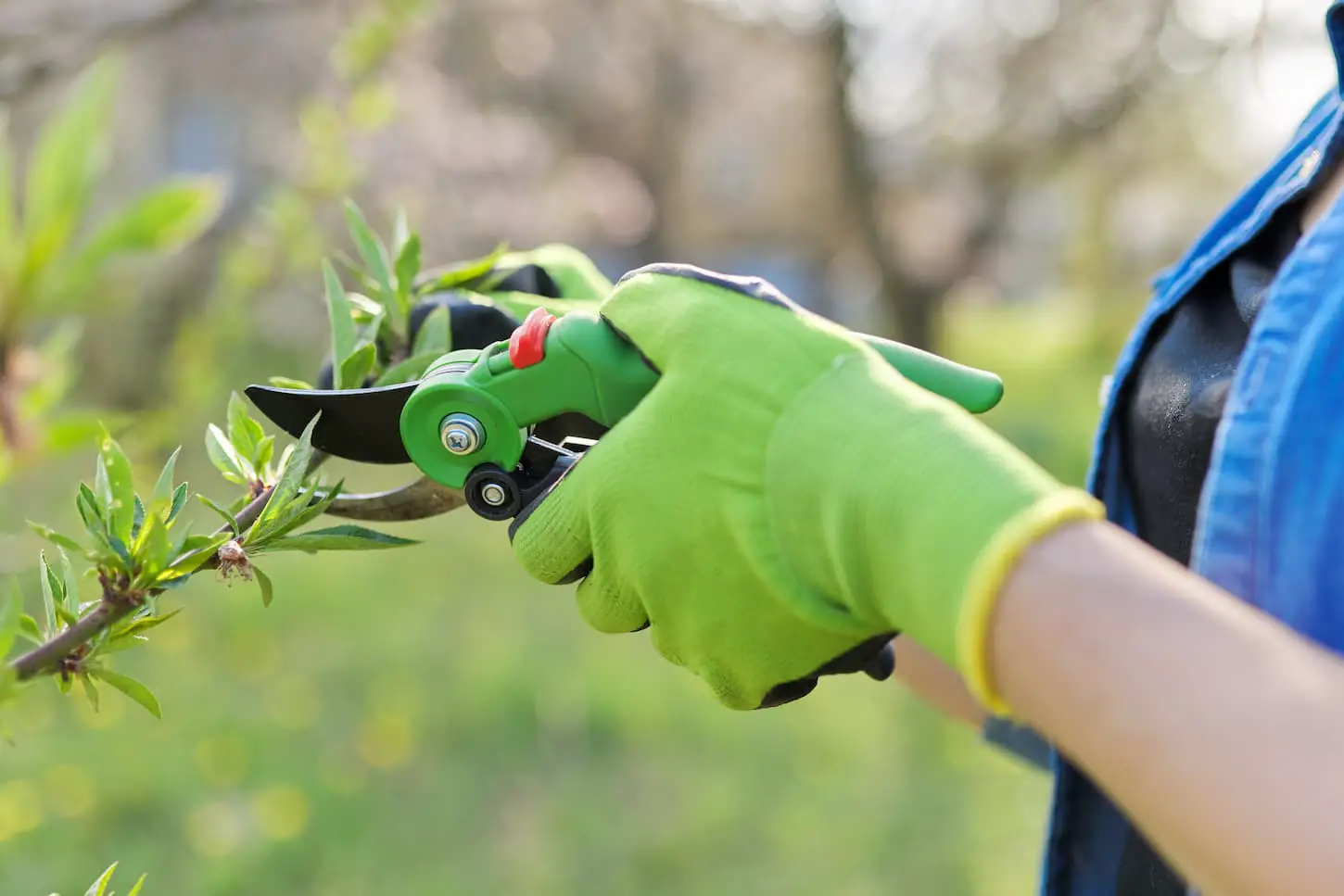
How to Prune Berry Bushes by Type
Ready to get some great details on how to prune your berry bush? Below is a guide to pruning berries, listed alphabetically. Because, well, there has to be some kind of order that makes sense, and listing them by my favorite varieties got too hard.
- Blackberry
- Blueberry
- Boysenberry
- Cranberry
- Currant
- Elderberry
- Farkleberry (sparkleberry/winterberry)
- Goji berry
- Gooseberry
- Grapes
- Huckleberry
- Kiwi
- Loganberry
- Mulberry
- Raspberry
- Salmonberry
- Strawberry
- Tayberry
Blackberry
Blackberries are perennial, meaning they can grow for years, but their canes are not. The canes are biennial, which means they can only produce fruit for only 2 years. After 2 years, it will not give you fruit again. The second-year canes (floricanes) can be pruned after the harvest.
Pruning blackberries for fruit production
Prune the dead (spent) canes to improve fruit production. Tipping the canes can also result in improved fruit quality and size, though it may result in a smaller harvest quantity-wise.
Dead canes should be pruned after the harvest or while the plant is dormant. Tipping (or topping) the canes can happen in early spring (before flowering and fruiting are best) for both primocanes and floricanes.
Pruning blackberries for growth
Late summer is the best season to prune off the canes of blackberries. Blackberries are very abundant during early spring, what you can do is tip pruning it is also an option.
What you need to do is to cut or prune the floricanes for about 24 inches after its 2-year period. After it has been cut, it will encourage new ones to grow up. If the cane is not big enough, you can just cut the top inch.
Blueberry
Blueberry bushes are bushes, so don’t prune them like you would a cane-based berry plant.
If your blueberry hasn’t ever been pruned, you should start now. Then let it be for a year before you start pruning them again so that they can recover from the initial shock.
The best time for blueberries to be pruned is in late winter (January) to early spring (early March). Young blueberry bushes don’t need much pruning.
Trimming some bushes during the growing season is still necessary so, you can maintain their overall health.
Pruning blueberries for fruit production
For blueberries, you should start looking for strong branches first; you will know it right away because it has the best flowers on them, these are the ones you should save. Now, if you see dead, old, or damaged branches your next step is to prune them.
Start by cutting the damaged ones all the way back to the base of the branch. The texture of the dead, old, or damaged branches is very different from the new and healthy ones.
Pruning blueberries for growth
If you see crossed branches or rubbing branches from each other what you need to do is to untangle them because it also has a big effect on the growth of your blueberry plant. It can also prevent proper airflow and sunlight from reaching the interior of the plant.
Depending on the age of your blueberry plant, you may also want to consider pruning back the oldest and the thickest branches all the way back to the base.
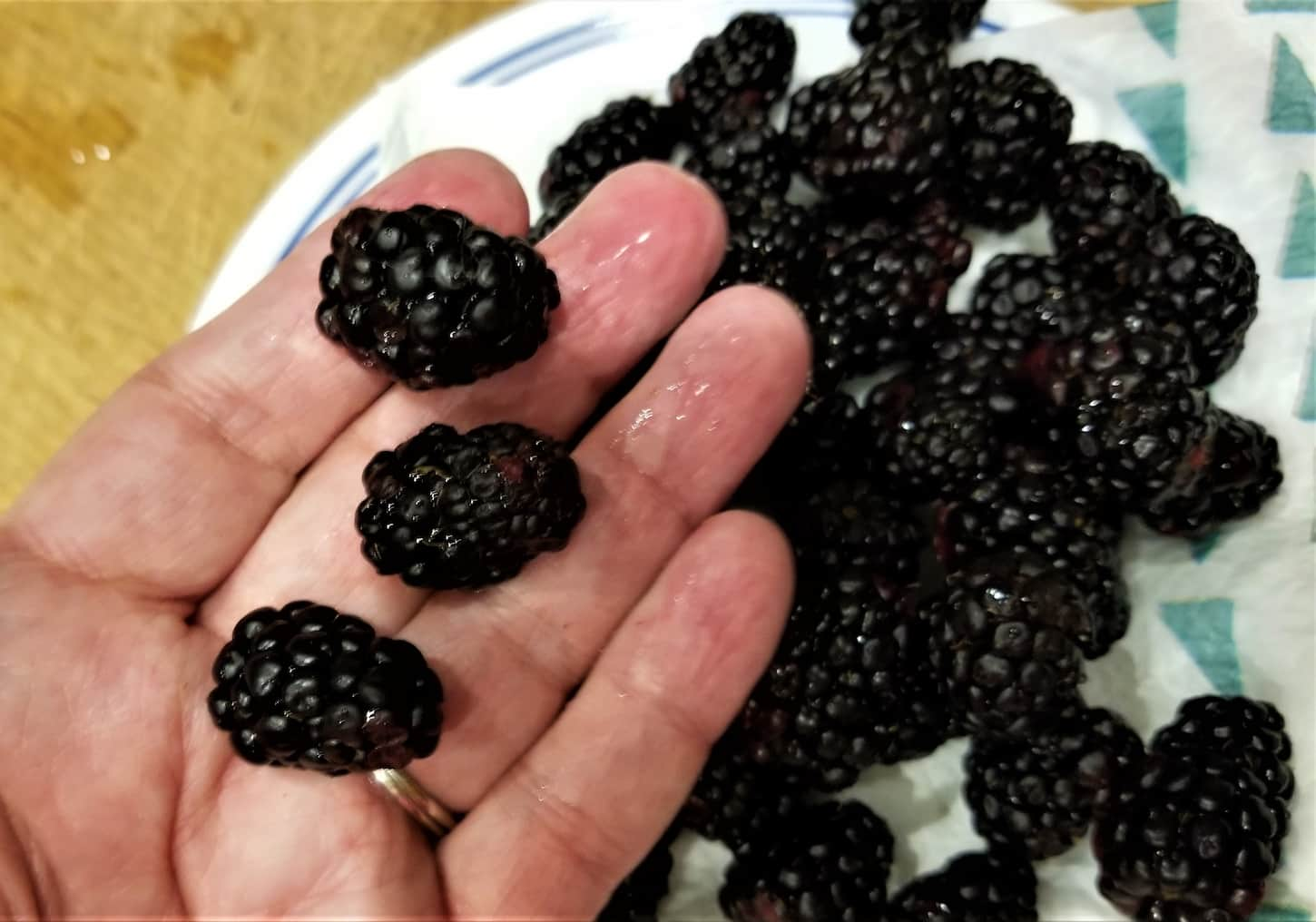
Boysenberry
Pruning is one of the most essential parts of growing boysenberries. Before you start pruning, you need to first know the difference between floricanes and primocanes.
Winter is the best season for pruning boysenberries.
But, if you want to prune it in summer, you can still do so. But, not too much ok? Prune some of the tips of the primocanes and you’re good to go.
Pruning boysenberries for fruit production
Prune spent canes and top fruiting canes to get the best harvest out of boysenberry canes.
Cut down the floricanes to ground level. You will know if it is a floricane if it is thick and the color is a bit brown or gray. Primocanes on the other hand are greener, younger, and thinner.
Once the floricanes are out, trim out some of the primocanes and leave seven of them only. Keep pruning it until it is 12 inches (or 0.3m) long.
Pruning boysenberries for growth
To help your boysenberry plants grow better, make sure you’re pruning out any spent canes. Furthermore, if you see canes that are diseased, damaged, and or broken the best thing to do is to cut them down to ground level immediately so they will not affect the other canes.
Cranberry
Next on our list are cranberries, what you need to prune first are the dead and the diseased ones. You will know it right away because you will see slimy spots and dying leaves.
The pruning season for cranberries usually begins in its third year. Major pruning is required during winter and a little bit of pruning during spring after it blossoms.
Pruning cranberries for fruit production
Keeping the plant healthy with regular pruning will help the cranberry plant keep producing fruit at peak levels.
Pruning cranberries for growth
Cut off up to 1/3 of the branch at ground level. You need to use a pruning tool because it will encourage new and healthy growth of another branch and it will also preserve its rounded form.
If the branch is already old and is no longer productive, pruning it back to six inches and cutting all the limbs is the best approach you can do. This may result in no flowers at all but it is ok because they will grow back healthy again.
Currant
If you have a black currant it is recommended not to touch the tips and only remove 1/3 of the branches. If you have a red currant it is ok to remove the tips and trim out ¼ of its branches.
Currant berries on the other hand need to be pruned during the time when it is dormant, which is usually between October (autumn) – early March (early spring).
Pruning currants for fruit production
Prune the plant to allow it to grow, especially by removing any rubbing, diseased, damaged, or dead branches. This will also encourage fruit production.
Pruning currants for growth
What you need to prune out first are the dead, diseased, and damaged branches first so that it will encourage new branches to grow.
Remove the branches that are rubbing each other and prune the center to allow sunlight and air into your plant.
Next, prune the branches that have stood for a long time already, so that new ones will grow. You will know it ahead because the branch is already too low into the ground.
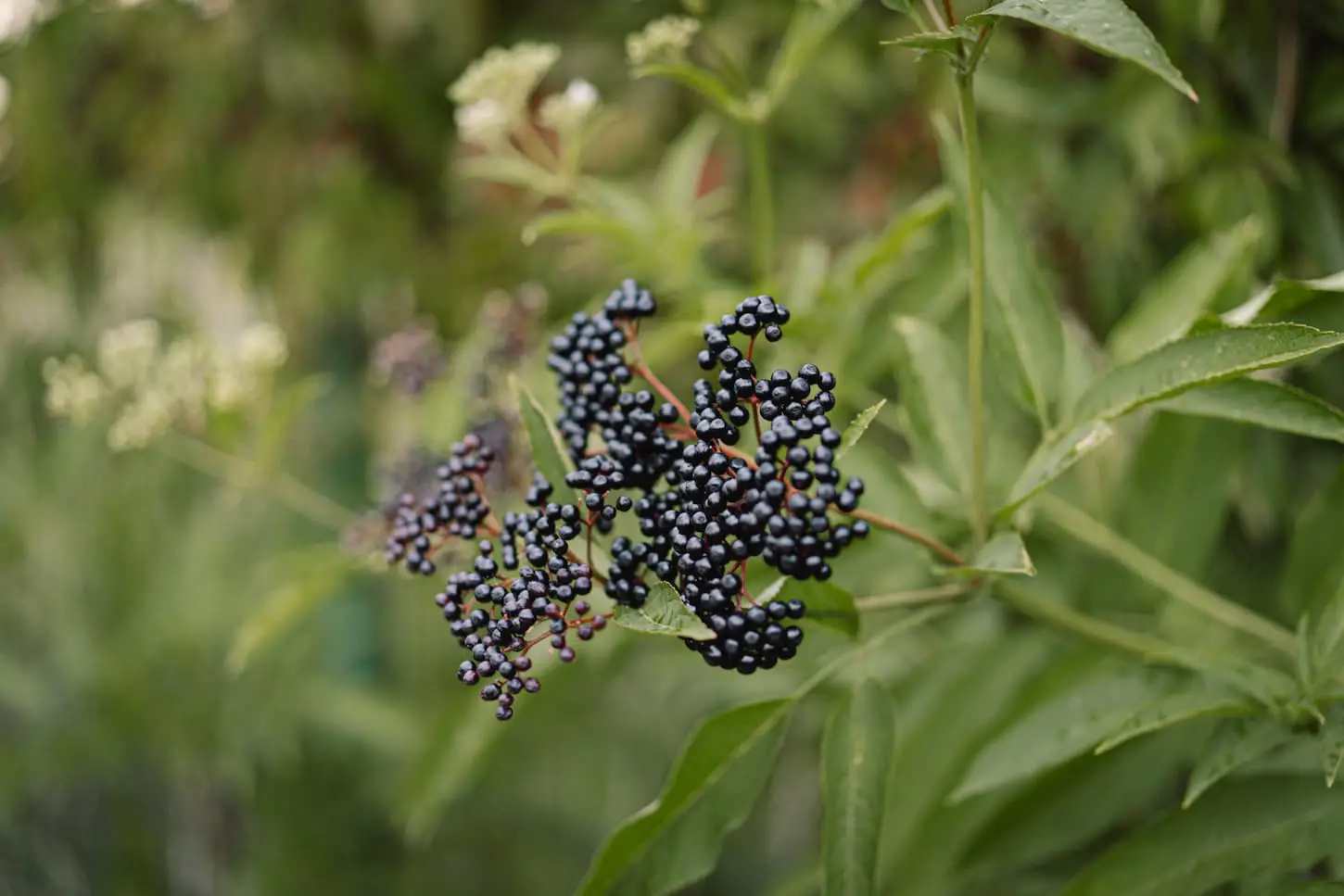
Elderberry
For the first two seasons of elderberry, there is no need for pruning. Just let it grow. But, after that, you will need to start pruning canes.
Pruning elderberries for fruit production
Start removing or pruning the dead, weak, and broken canes to the ground. The older canes especially the three-year-old ones need to be removed because it has a higher chance of having injuries and it produces significantly less fruit than they used to. Don’t worry because as soon as you remove them new ones will appear.
Pruning elderberries for growth
As we’ve said earlier, elderberries don’t need to be pruned after it has been planted. The second year is what you need to focus on, after its second year you will have to prune it annually in early spring.
Farkleberry (Sparkleberry/ Winterberry)
Pruning farkleberry shrubs before it grows is one of the ways you can do to maintain to shape. Prune the branches with pruning shears, it should be at an outward-facing angle then prune the branches to the ground.
Late winter to early spring is known to be the best time for pruning farkleberries or sparkleberries in some terms.
Pruning farkleberries for fruit production
Focus on yearly management and pruning to help the plant stay healthy with adequate sunlight, airflow, and space so that fruit production will be at peak performance.
Pruning farkleberries for growth
Prune the diseased branches so they will not spread into healthy ones. Then prune out the stems that are rubbing each other. If the branch is thick and larger than 1 inch, you also need to cut it out. Cut the offshoot suckers and the water sprouts of the branch.
Goji berry
Unlike other berries, goji berries only need light pruning. If you prune goji berries habitually it will make the branches dense and less manageable.
There are only 2 pruning seasons for goji berries and that is during winter and summer only.
Pruning goji berries for fruit production
Focus on maintenance pruning for goji berry, as you don’t want the branches to become so thick that they’re unmanageable (and produce less fruit).
Pruning goji berries for growth
When pruning them, you should start off with the dead and the damaged ones so that the new ones will have more space. Remember, older branches are harder to remove. You should prune 25 – 50% of the branches.
Next, remove the old stems and the suckers on the base of the plant to keep it rejuvenated.
To control the shape and height of this berry, you should also prune the tips. Fix the branches so that they will not rub off of each other.
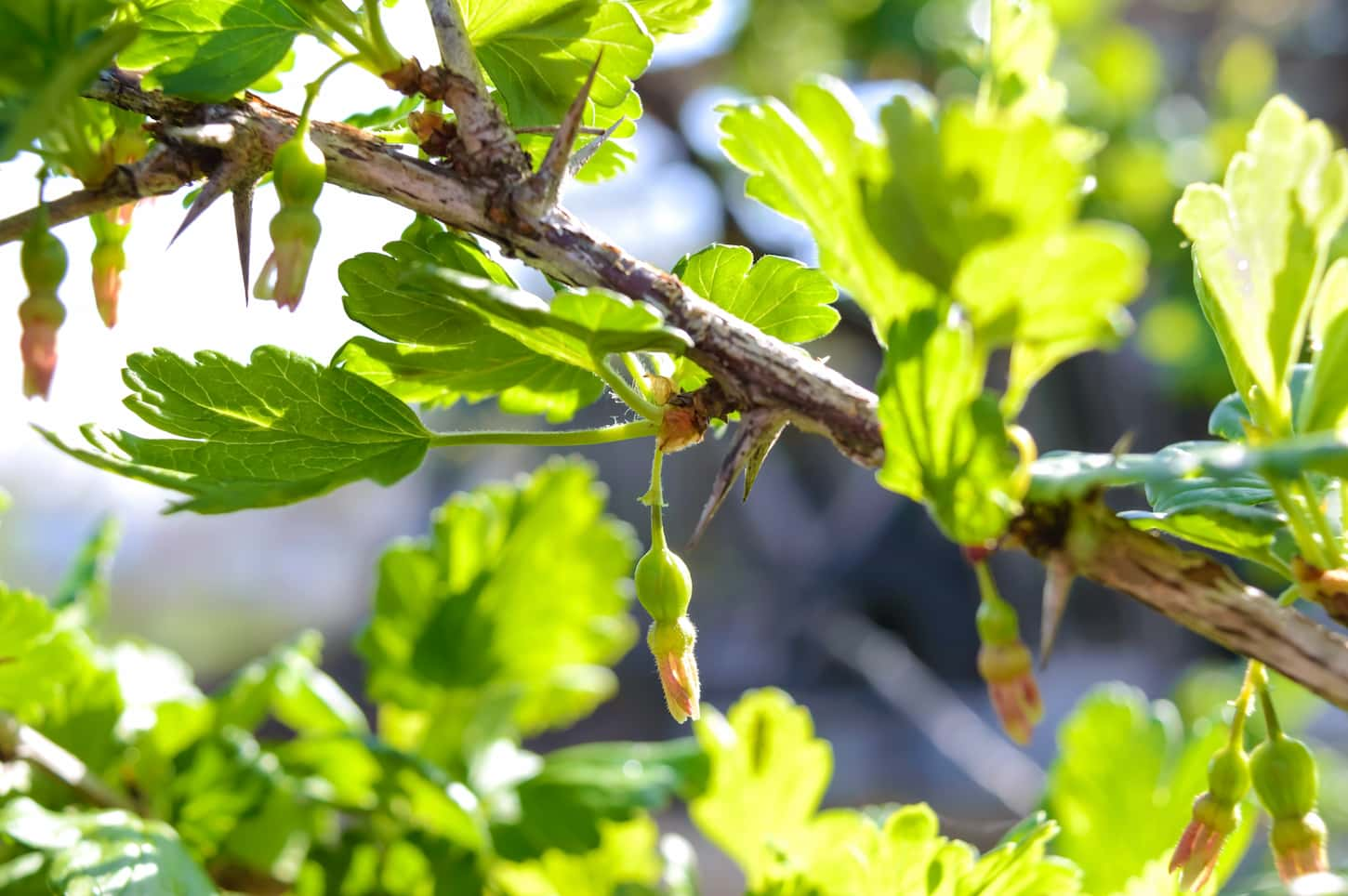
Gooseberry
Next are the gooseberries, this type of berry is one of the most complicated ones. Every year there is a different way of pruning it, so you might want to use a coding system that you can use to track the age of your gooseberry limbs.
Pruning gooseberries for fruit production
So, why do you need to do this? It’s in the bush’s best interest to be a manageable size, and also to keep the center open for sunlight and air. It also facilitates easy harvest.
Pruning gooseberries for growth
Prune gooseberries on a set schedule. Here’s how that may look for the first four years.
- One-year-old gooseberries need to be pruned, leaving six to eight limbs and all of them should be balanced.
- When it turned two years old, you will see new branches, but cut the old ones and leave three to four limbs. For the new limbs, cut them down also but you should also leave four to five limbs.
- Once it turned three years old, you need to cut three to four limbs from the one, two, and three-year-old limbs.
- When it turns four years old, you should already prune all the four-year-old limbs and so on for the coming years.
Late winter and early spring is also the best time for pruning this type of berry.
Grapes
There are two types of pruning when it comes to grapevines: cane pruning and spur pruning.
- In spur pruning, the shoots or the canes are pruned back to form spurs.
- In cane pruning, the aim is to prune and just leave a small number of vines.
The best season for pruning grapes is during spring (late February – March, April).
Pruning grapes for fruit production
Pruning grapes for fruit production is done by pruning them for growth. Focus on that and your grape harvests will be at peak performance.
Pruning grapes for growth
When pruning grapevines, you can already start as early as their first year because if you do not cut it down a bit, it will become a tangled mess and it is easier for diseases to go through.
What you need to do is to prune off all the growth and just leave one shoot. You can use your hands or a pruner.
A vine in its second year also needs to be pruned back. You will know it immediately because it is as thick as a pencil. After it has been pruned it will produce a new vine again.
Huckleberry
The pruning season for huckleberries is in late winter or early spring. When you prune them during these times, you can expect new canes to grow in late spring or early summer.
Pruning huckleberries for fruit production
When it comes to pruning huckleberries, you can just trim off the dead leaves and their branches. The new ones will still grow.
Pruning huckleberries for growth
Prune the branches close to the ground. It may take three to four years for it to completely grow back, but it will grow into another bush.
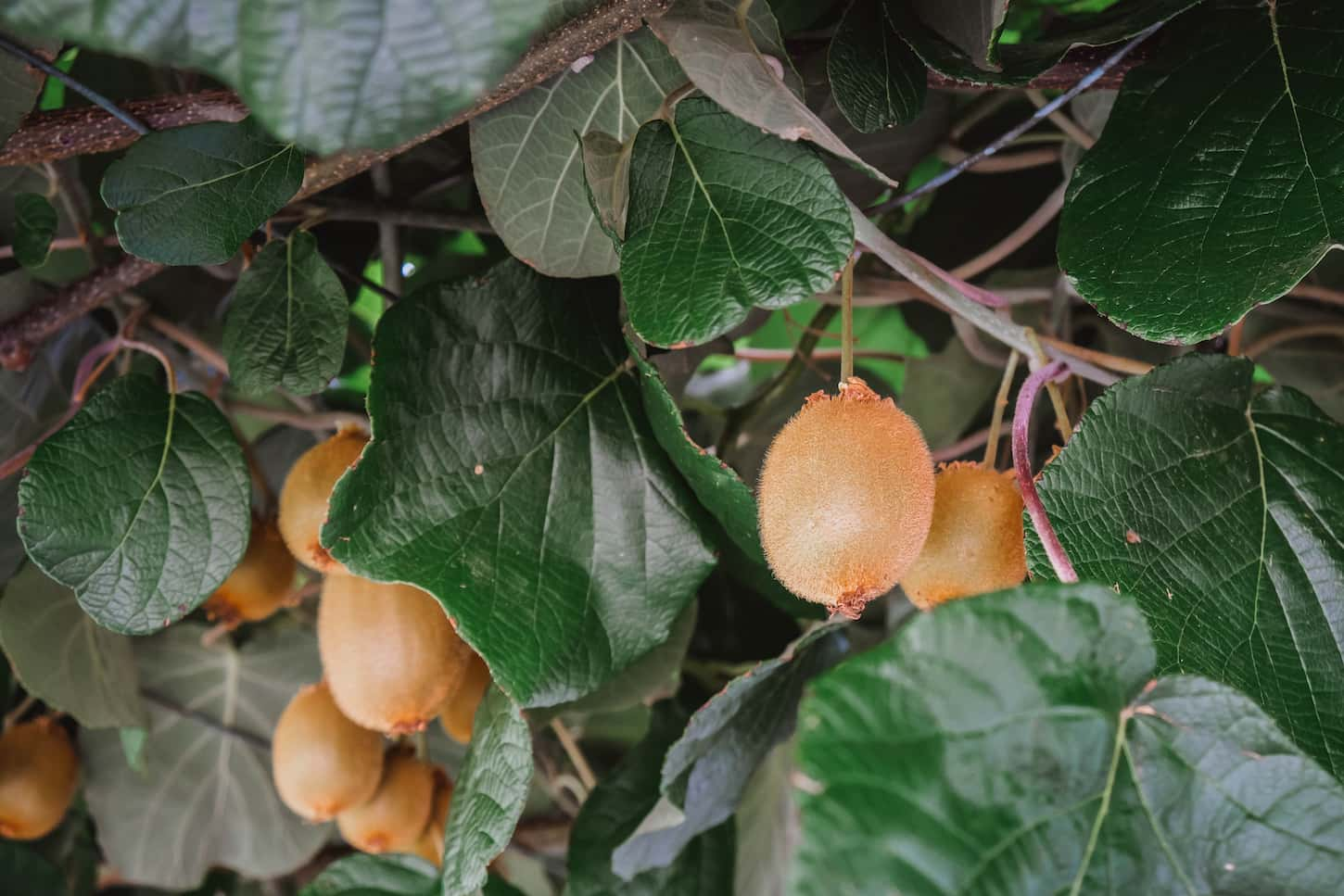
Kiwi
The best season for pruning kiwis is usually during its dormant period and that is during winter. Though, pruning is also required during the summer.
Pruning kiwi for fruit production
Prune the overgrown vines first. It is up to you what length it should be. Focus on keeping the plant healthy to encourage fruit production.
Pruning kiwi for growth
Prune two to four inches of vines every week to rejuvenate the whole plant. This will force new vines to grow from the base of the plant. Choose one vine that will become the leader. The leader vine should be vigorous.
You should also prune all the side shoots at the base. Remember to keep the healthy ones and remove the smaller shoots. To keep the tree upright, you should stick a seven-foot-long stick or a bamboo stick behind the vine for support.
Loganberry
For loganberries, autumn is the best time you can start pruning them. You can also start pruning in the middle of winter, as that is still acceptable.
Pruning loganberries for fruit production
Pruning is not recommended for loganberries for their first year because this is the year where they produce the best of the best fruits. After you harvest it, then you can cut it down to ground level.
Pruning loganberries for growth
When new canes show up, the next step you should do is to tie it all up, then prune the canes to approximately 20cm or 8 inches high.
Mulberry
Minimal pruning is recommended for mulberries because it bleeds sap from the cuts. To avoid this, you can only prune mulberries when they are fully dormant. Pruning season for mulberries is a month after their leaves fall off.
Pruning mulberries for fruit production
A light prune is advisable after you harvest the fruit. Mulberries are technically a tree, but you can also grow them as a shrub if you don’t want the shade a tree offers.
Pruning mulberries for growth
When pruning mulberries, you may only need to cut them on the side with the strongest shoots. You may want to trim it back anywhere from just a few inches (or centimeters) up to several feet (or yards or meters) depending on how you want the plant to look and produce.
Reminder: the pruning season for mulberries is usually done when it is dormant. It is usually during late winter.
Raspberry
Just like blackberries, the roots and the crowns of raspberries are also perennial. But the canes are biennial for summer-harvest varieties and annual for ever-bearing varieties.
You can prune the primocanes of the raspberries in summer before they get too tall. But, the pruning season for all raspberries is in March (late winter) or early April (early spring).
Pruning raspberries for fruit production
Remove the dead canes immediately right to the ground so that they will not affect the new ones. You need to also prune the canes that fruited last year because they will not produce fruit anymore (these are called spent floricanes).
Consider tipping (or topping) any canes that will bear fruit that year to encourage an only slightly smaller harvest of larger and juicier berries.
For ever-bearing canes, you can completely cut down all canes every year if you want. My friends literally mow their raspberry patch down every year to help get a better harvest out of their ever-bearing canes.
Pruning raspberries for growth
The recommended row for planting raspberries needs to be 1 ½ to 2 feet. What if it extends out of the row? Well, you need to prune that no matter how good it looks, or your raspberries will take over the yard. Make sure the canes are not close to each other also because they will crowd and shade each other out.
Also prune any canes that are too short, too thin, and any that appear diseased or injured. Keep the tallest, thickest, and also healthiest looking canes.
For more information on pruning raspberries, make sure you check out this article I wrote all about pruning just raspberries: What Happens If You Don’t Prune Raspberries? What To Expect.
Salmonberry
Salmonberries need to be heavily pruned during winter so it will encourage new canes to grow in spring. You need to also cut some old stems in summer after the fruiting season.
I’ll fully admit to having to rely on research for salmonberries – I’d thought they were a figment made up for the game Stardew Valley until I started researching pruning berries! Even so, they look like an amazing berry – even if they won’t grow super great in my area.
Pruning salmonberries for fruit production
After you harvest the fruits from it, you need to prune off all the old stems at the base of the plant. You will know right away if it is an old stem if it is orange and smooth. After you cut it down, new stems will grow, so don’t worry about pruning it.
Pruning salmonberries for growth
The maximum height for salmonberry is six feet tall. So if it is more than that, then you need to use your loppers to trim it back. These bushes spread as wide as they grow over the years, so maintaining them is not only recommended, it’s also crucial.
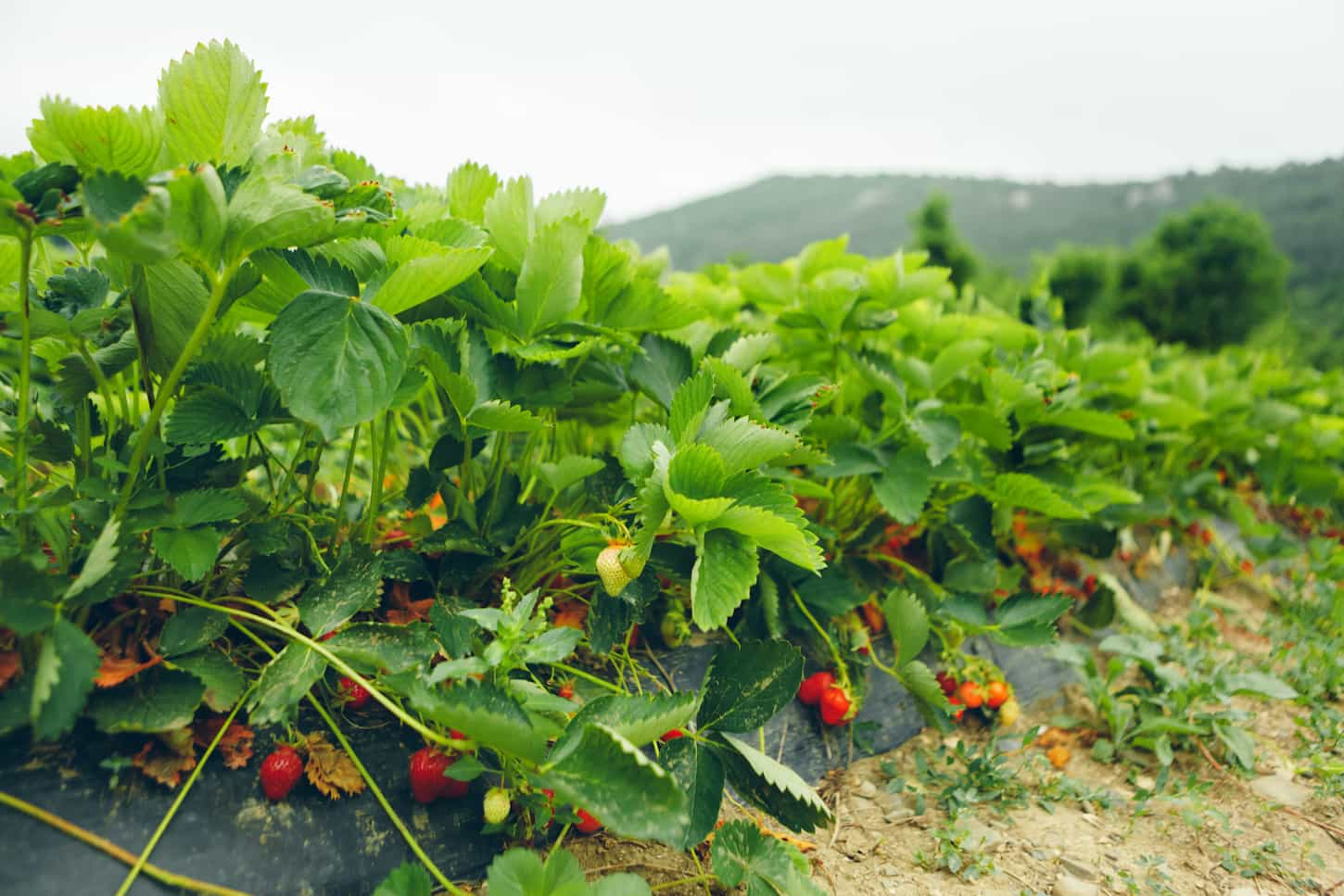
Strawberry
When pruning strawberries, the first thing that you should look for is runners.
Pruning strawberries for fruit production
Runners steal the nutrients from your strawberry plants and it makes it hard for them to fruit. What you need to do is to cut all of the runners using a regular pruner. Cut the runners a few centimeters from the base so the plant can focus on fruit production.
Prune strawberries during summer to early autumn when strawberries have finished fruiting.
Pruning strawberries for growth
Look for strawberry blossoms. Strawberry blossoms usually show up during early spring or early summer. Remove the flowers as soon as you see one because this will help your plant to focus more on root development rather than growing flowers or fruit.
Prune strawberries for growing during spring, as that’s when the flowers first show up.
Tayberry
Tayberries don’t need much pruning in their first year but, it needs to be pruned after it is done producing fruit every year. The best season for pruning tayberries is during the summer.
Pruning tayberries for fruit production
What you need to do is to cut the canes which carried the fruits back to ground level. Then tie the new ones so they will replace the old canes.
Removing some of the canes during spring is also an option to encourage a harvest of larger, juicier berries.
Pruning tayberries for growth
Each spring you should prune new canes back to 30 inches tall. This will keep the tayberry bush under control while encouraging growth.
Tips on Pruning Specific Berry Types
These tips work for all plants, but it won’t hurt if you refer back to your specific berry plant type (as listed above) for any specific tips and hints.
Tip #1: Use the right tools for pruning.
Always clean it before and after use, and wipe off the sap and the debris left on the blade. Cleaning it also extends its life.
Tip #2: Sharpen your tools regularly.
You don’t want a bad pruning, right? So, always make sure to sharpen your pruning shears and store them properly. Clean cut in berries heals much faster and it also minimizes future problems with your plants.
Tip #3: Prune berry plants at the right angle
Always make sure that the angle where you will cut your berry canes is always right. For some plants, that means using a right (90-degree) angle. For others, it needs to be at an acute (less than a 90-degree angle).
Cutting points are very important for different types of berries.
Tip #4: Know when bleeding sap is good or bad
Some berry plants bleed sap heavily after you prune them. For some, don’t worry as it is not harmful. What you need to do is to just let it heal on its own, as adding sealers will only trap the moisture which will encourage diseases to come through and infect your plant.
Tip #5: Use fertilizers as appropriate
Did you know? Do some berries love fertilizers after pruning? Yup! Fertilizers give your berry plants more nutrients and encourage berry plants to grow more beautifully. That’s going to mean more berries at harvest time for you (and your family).
Got alpacas? Make sure you use that awesome fertilizer! Read more about it here: How to Fertilize with Alpaca Poop: The Complete Guide.
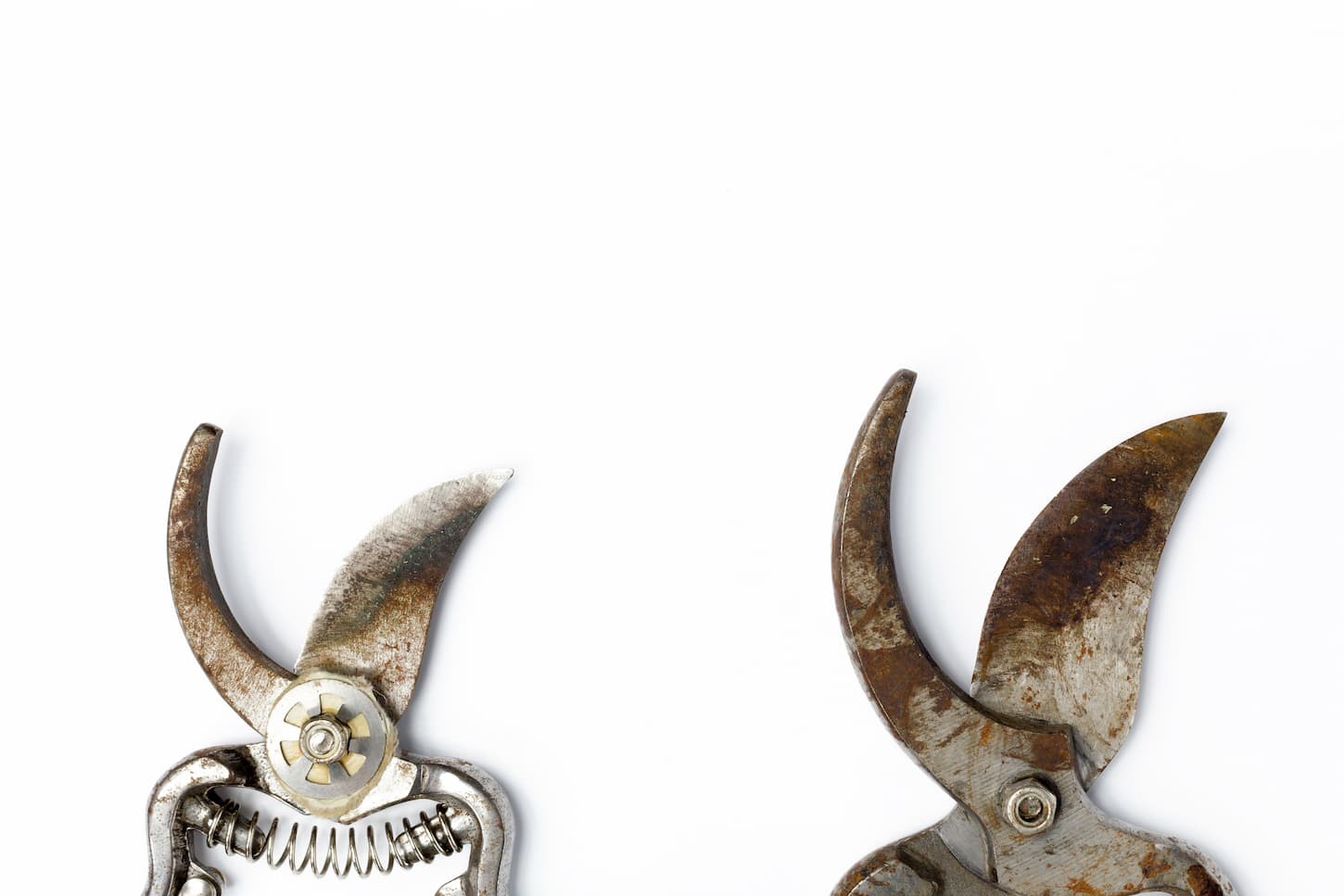
Best Berry Pruning Products
Here are some of the best products for keeping your berry patch under control. Here are some products from Amazon that you can use that I’ve used and recommended or that I’ve got my eye on buying for next season.
Heavy Gloves
Eye Protection
- NoCry Protective Non-Vented Safety Goggles with Anti-Fog Coating, Clear Scratch-Resistant Lenses
- Sellstrom Safety Goggles
- Or just wear your regular sunglasses like I do, though I keep some protective goggles on hand for cloudy days when I don’t need sunglasses.
Pruners
- Dramm 18016 Stainless Steel Compact Pruner, Berry
- Fiskars 91095935J Steel Pruning Shears Bypass Pruner
Loppers
- Amazon Basics Garden Tool Collection – Bypass Lopper, Tree Trimmer, With Carbon Steel non-Stick Coating Blade, Aluminum tube handle with Comfort Grips 28”
- Fiskars 391461-1003 Bypass Lopper, 28 Inch
Wooden stakes
- Universal Forest 1334 1″x2″x12″ Grading Stakes (bundle of 24)
- Or use a series of t-posts (click here to see t-posts on Amazon) and wire gardening line to create a trellis.
Key Takeaways on Pruning Berry Bushes and Plants
Pruning your berry bushes is a lot of work, but the harvest is when you literally reap the rewards of your labor. Growing up in Arizona (in a part of it where berries don’t thrive), I’ve had to spend years learning how to properly care for berries. And pruning them is definitely an important part of taking care of your berry patch.
So make sure you take care of your berry patch properly – so that you can enjoy the harvest every season. And if your berry patch is still a dream? You can help keep it under control by planting it in a grow box.
So make sure you read this article I wrote about grow boxes next: Does it Matter What You Make Grow Boxes or Raised Beds From? The answer will surprise you – it certainly surprised me as I gathered all of the research!
Resources
Learning from your own experience is essential, but learning from others is also intelligent. These are the sources used in this article and our research to be more informed as homesteaders.
- Hayes, Bethany. “Growing Salmonberries: How to Bring These Wild Treats to Your Garden.” MorningChores, Morning Chores, 8 Jan. 2021, morningchores.com/growing-salmonberries/.
- “How to Prune Blackberries – Blackberry Care – Eckert’s.” Eckert’s Family Farms and Seasonal Pick-Your-Own Crops, www.eckerts.com/how-to-prune-blackberries.
- Lee, Melody. “How to Prune Highbush Cranberry.” Garden Guides, 3 Sept. 2020, www.gardenguides.com/85238-prune-highbush-cranberry.html.
- “Mulberries (Morus Nigra).” RHS Gardening, Royal Horticultural Society, www.rhs.org.uk/advice/profile?pid=642.
- “Pruning Blackberry Plants – Stark Bro’s.” Stark Bro’s Nurseries & Orchards Co., www.starkbros.com/growing-guide/how-to-grow/berry-plants/blackberry-plants/pruning.
- “Pruning Grapevines.” GARDENING AUSTRALIA, Australian Broadcasting Corporation, 16 Dec. 2019, www.abc.net.au/gardening/factsheets/pruning-grapevines/9428852.
- Spengler, Teo. “Cutting Back Boysenberries: Tips for Effective Boysenberry Pruning.” Gardening Know How, www.gardeningknowhow.com/edible/fruits/boysenberries/effective-boysenberry-pruning.htm.